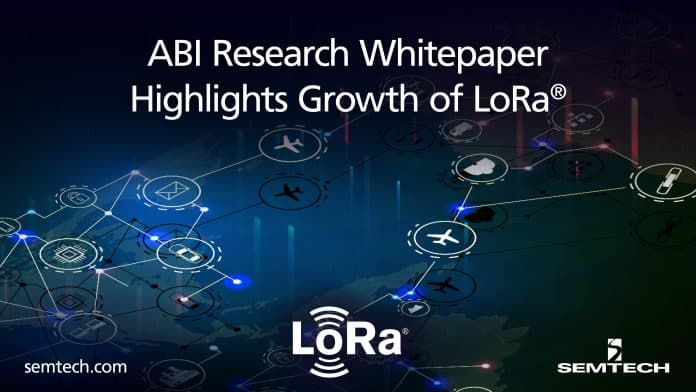Semtech Corporation commissioned ABI Research a white paper entitled "LoRaWAN and Multi-RAN Architectures Will Connect the Next Billion IoT Devices," which contains an in-depth exploration of the rapid growth of the Internet of Things and applications that leverage multi-RAN architectures.
The research indicates that the LoRaWAN protocol is the leading licence-free Low Power Wide Area (LPWA) network technology targeting large IoT vertical markets: metering, cities, asset tracking and logistics, building automation. Specifically, the white paper describes five LoRaWAN network implementations based on multi-RAN architectures:
- Orange, which enables device and data management for cellular and non-cellular LPWA network technologies, with the Orange Live Objects platform;
- JRI-MySirius, which uses sensors leveraging LoRaWAN and a cloud-based application platform, to provide turnkey temperature monitoring for fixed and mobile assets;
- Ercogener , which has developed an end-to-end asset tracking solution that supports the LoRaWAN protocol and is used by the French State Railway Company;
- MultiTech, original gateway integrating LoRa into Industrial IoT applications with support for Ethernet, 2G, 3G, 4G LTE, Wi Fi, Bluetooth/BLE and GNSS;
- Chevron, which has deployed a LoRaWAN network infrastructure to digitise a number of oil and gas fields.
ABI Research forecasts
LoRa devices will play an important role as a key LPWA networking technology as the IoT continues to connect physical devices to digital resources. Additional key points highlighted in the white paper include:
- 5G and non-cellular network technology will co-exist in the form of hybrid networks or multi-RAN architectures.
- Full 5G will take longer than expected, because 5G cannot cope with IoT expansion in the short term. 5G networks and device hardware supporting Version 17 specifications will not be commercially available until early 2024.
- By 2026, LoRa is expected to be the leading non-cellular LPWA network technology and will account for more than a quarter of the share of all LPWA network connections and more than half of all non-cellular LPWA connections. Total non-cellular LPWA connections in 2026 are expected to reach 1.3 billion.
- Consumer applications that exploit LoRa arestarting to take off; traditional architecture is seeing strong competition from LPWA networking technologies, which offer direct device-to-Cloud connectivity for a growing number of smart home devices.
Semtech's LoRa platform
"The future of IoT connectivity requires flexible solutions that address a broad spectrum of vertical IoT applications, use cases and device types," said Marc Pegulu, Vice President of IoT Applications in Semtech's Wireless & Sensing Products Group. "LoRa and the Open LoRaWAN protocol enable interoperability and seamless connectivity between the many devices that can coexist in a single environment. As a technology provider, our job is to create solutions that make it easy for people to deploy and use."
Semtech Corporation is a provider of high-performance analog and mixed-signal semiconductors and advanced algorithms for infrastructure, high-end consumer and industrial equipment. Its LoRa device-to-Cloud platform is a wide-area, ultra-low-power, globally adopted solution for IoT applications. It enables the rapid development and deployment of cost-effective, wide-area IoT networks, gateways, sensors, product modules and IoT services worldwide. Semtech's LoRa devices provide the communication layer for the LoRaWAN protocol of the LoRa Alliance, an open IoT alliance for Low Power Wide Area Network (LPWAN) applications used to deploy IoT networks in over 100 countries, of which Semtech is a founding member.
You might also be interested in:
Semtech and AWS: collaboration to integrate LoRaWAN on servers with AWS IoT Core
Bluetooth on the rise in the near future, says Abi Research data



















